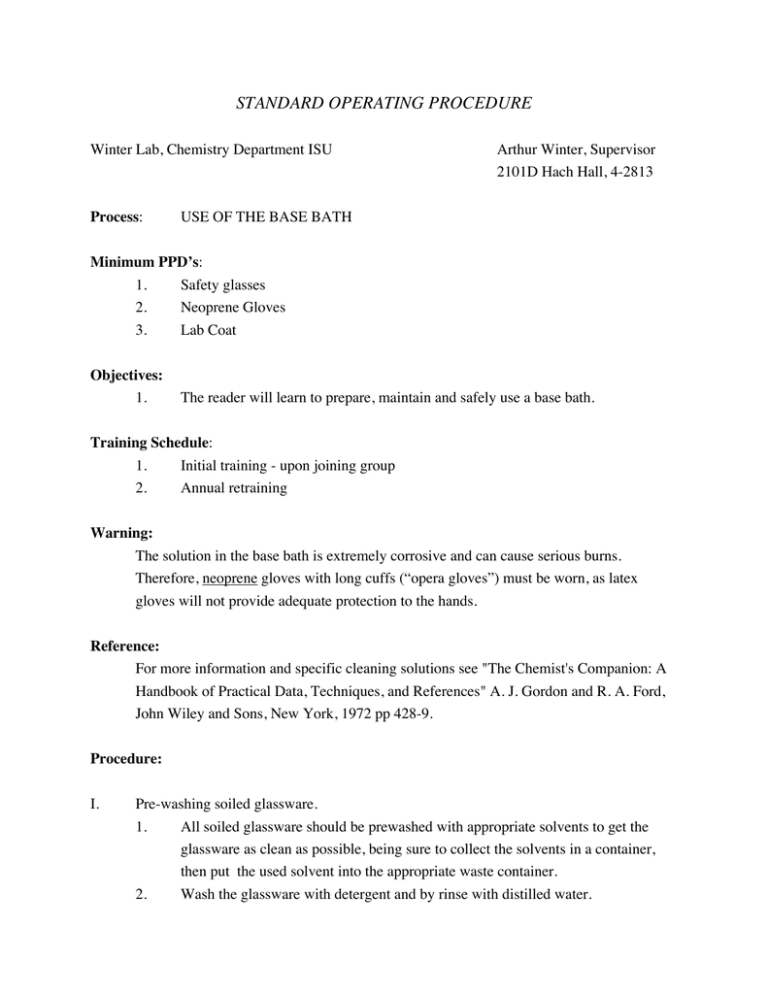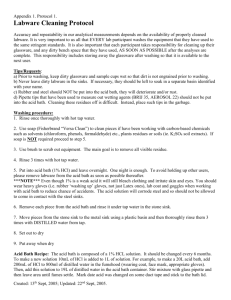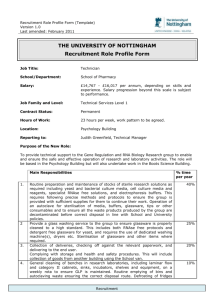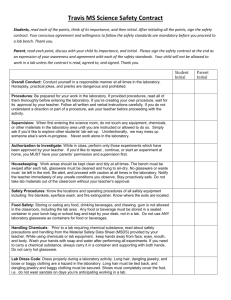STANDARD OPERATING PROCEDURE
advertisement

STANDARD OPERATING PROCEDURE Winter Lab, Chemistry Department ISU Process: Arthur Winter, Supervisor 2101D Hach Hall, 4-2813 USE OF THE BASE BATH Minimum PPD’s: 1. Safety glasses 2. Neoprene Gloves 3. Lab Coat Objectives: 1. The reader will learn to prepare, maintain and safely use a base bath. Training Schedule: 1. Initial training - upon joining group 2. Annual retraining Warning: The solution in the base bath is extremely corrosive and can cause serious burns. Therefore, neoprene gloves with long cuffs (“opera gloves”) must be worn, as latex gloves will not provide adequate protection to the hands. Reference: For more information and specific cleaning solutions see "The Chemist's Companion: A Handbook of Practical Data, Techniques, and References" A. J. Gordon and R. A. Ford, John Wiley and Sons, New York, 1972 pp 428-9. Procedure: I. Pre-washing soiled glassware. 1. All soiled glassware should be prewashed with appropriate solvents to get the glassware as clean as possible, being sure to collect the solvents in a container, then put the used solvent into the appropriate waste container. 2. Wash the glassware with detergent and by rinse with distilled water. II. Preparation of Base Bath 1. Place approximately 8 liters of isopropanol in a plastic bucket that has a tight fitting lid. 2. To the isopropanol, carefully add about 1 kg KOH III. Using the base bath. 1. Before working with the base bath, be sure that your gloves are in good condition. Replace them if you have any doubt as to their condition. 2. While wearing saftey goggles and neoprene gloves, glassware that has been prewashed according to the above procedure is gently lowered into the base bath allowing the solution to completely fill the glassware. 3. Allow the glassware to remain in the solution several hours or overnight. 4. While wearing safety goggles and neoprene gloves, remove glassware from the base bath allowing as much of the solution to drain as is possible. 5. Rinse the alcoholic solution from the glass with tap water. 6. Rinse with distilled water. 7. Rinse with acetone and place on the drying rack. 8. After 15 min. the glassware may be placed in a drying oven. Cautions: 1. 2. VI. Glassware can be etched from prolonged exposure to the basic solution. Quartz glassware is too expensive to routinely expose to this risk. It should not be cleaned with a base bath Base bath will enlarge the pore size of glass frits and should only be used on fritted glassware as a last resort. Maintenance 1. Base baths should be disposed of properly and replaced with new base/alcohol solutions as the cleaning ability decreases, normally the base bath is useable for several months. Training Requirements in the Winter Group For Glass Cleaning Using the Base Bath The trained user for glass cleaning must: 1. Read and understand this document. 2. Be supervised once while adding and removing glassware to and from a base bath. Approved: Date: Arthur Winter x4-2813






